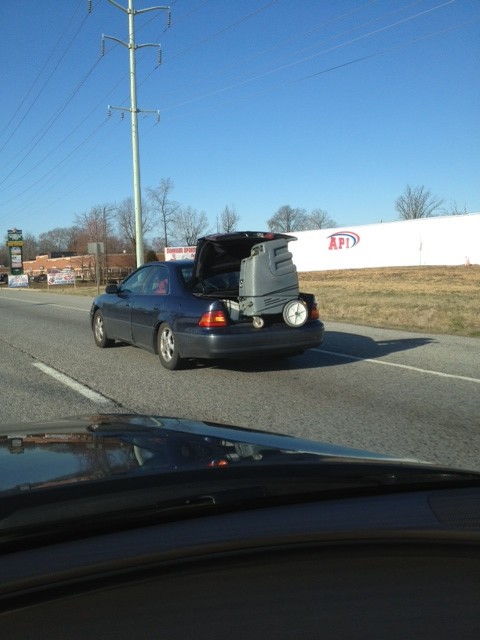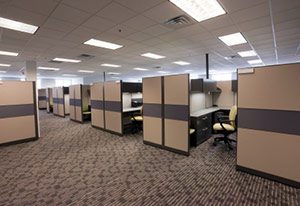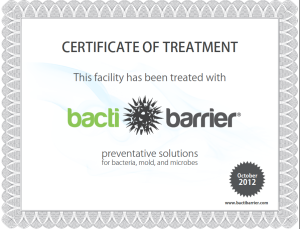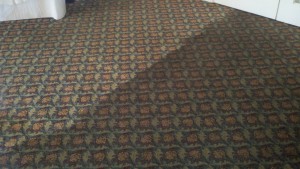The Hidden Side of Customer Satisfaction: Floor Maintenance
 Have you ever walked into a store and immediately noticed how many spills are on the carpet? How about a sticky hard surface or wood that is in need of attention? How about a countertop in disarray? Even if these things do not draw your attention immediately, subliminally they can have a lasting impact on your first impressions of the store and its product line.
Have you ever walked into a store and immediately noticed how many spills are on the carpet? How about a sticky hard surface or wood that is in need of attention? How about a countertop in disarray? Even if these things do not draw your attention immediately, subliminally they can have a lasting impact on your first impressions of the store and its product line.
There are many professional firms that cater to the development and sustainability of the relationship between the retailer and the consumer, but customer loyalty is achieved when you look at a consumer’s experience holistically. From excellent customer services to the availability of merchandise, there is one component of a positive retail experience that is often, for a lack of a better term, “swept under the rug” — the professional maintenance and cleaning of that retail space.
Customers are sensitive to cleanliness. Clean has been defined as “free of unwanted matter to its greatest optimal extent.” While not everyone will describe what makes something “clean” in the same way, soiled or soured areas definitely detract from the customer experience. Another key component of clean, especially in today’s world, is green.
Many retail stores and their merchandise focus on the sustainable environment. The word “clean” has taken on new meaning because, if you are green, you better be clean. Consumers want green, they seek green and they are demanding green. It is not just about the chemicals used to clean. Part of being green is maintaining a healthy indoor environment.
The negative impact of a soiled surface — on both the store’s indoor air quality and the store’s overall appearance — could be detrimental to any walk-in retail business. Properly maintaining and cleaning hard and soft floor surfaces, rather than replacing them, is an easy and costeffective way to help elevate customer satisfaction and keep more buyers in the store.
Proper maintenance by professional cleaners can and will extend the life of the flooring surfaces. Manufacturers have maintenance guidelines for their products. Every type of floor comes with these specific maintenance instructions. These instructions or guidelines recommend the use of cleaning products and cleaning processes or systems. Usually warranties are tied to the proper use of designated equipment, use and application of chemicals and proper cleaning frequency. Properly specified maintenance programs should be implemented immediately after a new build-out or remodeling.
Maintenance programs should include the four levels of cleaning:
- Preventative
- Routine
- Interim
- Restorative
Preventative cleaning should be the first step any retail manager takes. It refers to adding soil containment systems or strategically placed indoor and/or outdoor walk-off mats at entrances. The mats should be long enough for people to take three to five steps, though they may need to be larger if the space is bigger. Mats typically not only protect interior floors but also can help to reduce a slip/fall hazard.
The next step is routine or daily cleaning, which includes, but is not limited to, vacuuming, dusting, mopping and spot cleaning. Use high-quality vacuums that remove soil and contain dust with minimal impact on the texture of the commercial carpet. The Carpet & Rug Institute’s (CRI) Green Label certification helps identify high-quality vacuums. Effective spot cleaning is a two-step process. Start by absorbing the spill before treating the spot or stain. The key to spot cleaning is to act quickly because the longer you wait, the higher the probability that a spill will become a permanent stain. The CRI’s Seal of Approval (SOA) program for cleaning agents can help take the guessing out of choosing the correct cleaning products.
Interim cleaning should be completed at regular intervals, depending on the size and traffic of the facility. It usually involves using appearance or surface cleaning systems, and is highly productive, cost-effective and quick drying.
Restorative cleaning requires more intensive cleaning systems and higher levels of training, and it may not be needed as often when proper interim cleaning is performed. Restorative cleaning systems are typically used when the carpet or floor has been neglected, or when it has experienced heavy traffic.
Retail managers should determine how they define “clean” and then appropriate funds to achieve that goal. After your budget is approved, contact a floor cleaning professional to assist in the development of a maintenance program that meets or exceeds those objectives. Visit the Institute of Inspection, Cleaning and Restoration Certification (IICRC) at www.certifiedcleaners.org to find a certified flooring professional in your area.
Whether you have carpet, wood, marble/granite, polished concrete, VCT or rubber floors, improper cleaning frequency or inadequate cleaning practice leads to higher costs. Waiting to develop a maintenance program until the build-up of soil is visible generally ends up requiring more expensive restorative cleaning or even replacement. The savvy retailer will be proactive rather than reactive when maintaining floors. A properly specified and implemented maintenance program is worth its weight in gold.
 Doug Bradford, CR, LEED AP, is CEO of Eco Interior Maintenance, Inc., a commercial textile and detail cleaning company that does business in Maryland, Virginia, Washington, D.C., and Florida. He is currently chair of the Institute of Inspection Cleaning & Restoration Certification’s (IIC RC) S100 Standard and Reference Guide for Professional Cleaning of Textile Floor Coverings revision.
Doug Bradford, CR, LEED AP, is CEO of Eco Interior Maintenance, Inc., a commercial textile and detail cleaning company that does business in Maryland, Virginia, Washington, D.C., and Florida. He is currently chair of the Institute of Inspection Cleaning & Restoration Certification’s (IIC RC) S100 Standard and Reference Guide for Professional Cleaning of Textile Floor Coverings revision.








 Have you ever walked into a store and immediately noticed how many spills are on the carpet? How about a sticky hard surface or wood that is in need of attention? How about a countertop in disarray? Even if these things do not draw your attention immediately, subliminally they can have a lasting impact on your first impressions of the store and its product line.
Have you ever walked into a store and immediately noticed how many spills are on the carpet? How about a sticky hard surface or wood that is in need of attention? How about a countertop in disarray? Even if these things do not draw your attention immediately, subliminally they can have a lasting impact on your first impressions of the store and its product line. Doug Bradford, CR, LEED AP, is CEO of Eco Interior Maintenance, Inc., a commercial textile and detail cleaning company that does business in Maryland, Virginia, Washington, D.C., and Florida. He is currently chair of the Institute of Inspection Cleaning & Restoration Certification’s (IIC RC) S100 Standard and Reference Guide for Professional Cleaning of Textile Floor Coverings revision.
Doug Bradford, CR, LEED AP, is CEO of Eco Interior Maintenance, Inc., a commercial textile and detail cleaning company that does business in Maryland, Virginia, Washington, D.C., and Florida. He is currently chair of the Institute of Inspection Cleaning & Restoration Certification’s (IIC RC) S100 Standard and Reference Guide for Professional Cleaning of Textile Floor Coverings revision.